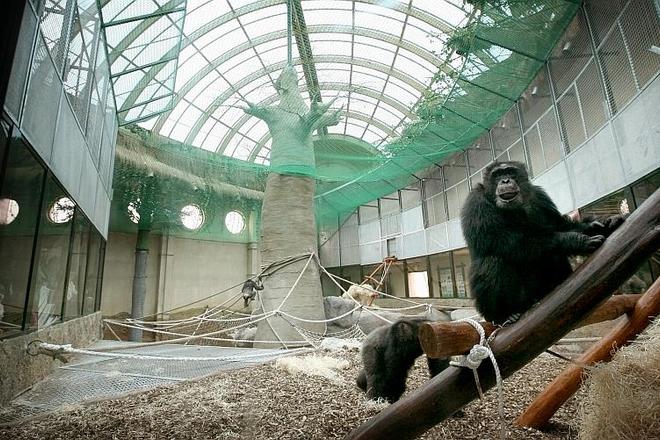IN THE greenest part of Bratislava, in Mlynská dolina, both well-known and more obscure wildlife species have had a home for 50 years. On July 1, 1959, Bratislava’s leadership – then known as the City National Council – issued a decree founding the zoo in Bratislava. Its doors were opened on May 9, 1960. The Bratislava Zoo was one of the first to breed lynx and that animal has become its symbol. The zoo is a member of the European Association of Zoos and Aquariums (EAZA), the International Association of Zoos (IZE) and other international organisations.
Its aims include breeding endangered species, wildlife propagation in the form of re-introduction (breeding and returning endangered wildlife to their original habitat), education and environmental enlightenment, and participation in basic European programmes for wildlife preservation. Bratislava Zoo has reintroduced a young female European bison, a wisent, back into the Poloniny National Reserve and helped with the reintroduction of the Scimitar-horn oryx (Oryx dammah) into the Sidi Toui National Park in Tunisia. The zoo has been successful in breeding camels, gibbon apes, and pygmy goats and it offers visitors a chance to see South African lions, white tigers, an American jaguar, Ceylon leopards, suricates, sloths, armadillos, flamingos and pelicans, a pygmy hippopotamus (Hexaprotodon liberiensis), etc. One of its special attraction is a Dino Park, a unique exhibition of Mesozoic reptiles (some of them moving and making realistic sounds), and recently it opened a huge, modern Pavilion of Great Apes that provides a dignified home to several different ape species. In 2008, the zoo was recognised for the two white-tiger cubs that were born in its environs. Recently, young pygmy goats were also born at the zoo as well as a red-handed tamarind (Saguinus midas), a woylie (Bettongia penicillata), a capybara (Hydrochoerus hydrochaeris), and a wisent (Bison bonasus).
Although an older idea, the first official actions taken to build the zoo were introduced only after 1948. Originally, the zoo covered only about 9 hectares but soon it started expanding and it now has 96 hectares. Two-thirds of the zoo’s area was lost to construction of a freeway between 1981 and 1985, and despite some dire financial straits in some years, conditions have kept improving steadily and ever more interesting species have been added. Today, Bratislava zoo has 16 species which are part of the European Endangered Species Breeding Programme. Altogether, the zoo has more than a thousand animals of 161 species, 15 of which are globally-endangered species. Each year, the zoo in Bratislava takes part in an organised campaign to save a certain animal group or species or a whole biotope, the current one aimed at protecting European beasts of prey, birds of prey and the harbour porpoise (Phocoena phocoena).



 Bratislava Zoo opened a new Pavilion of Great Apes. (source: Sme - Tomáš Benedikovič)
Bratislava Zoo opened a new Pavilion of Great Apes. (source: Sme - Tomáš Benedikovič)